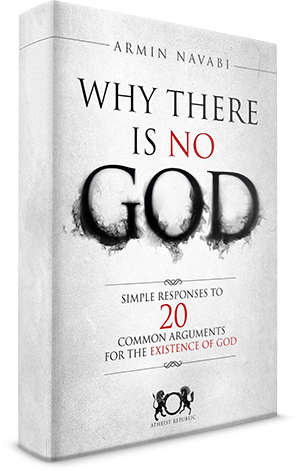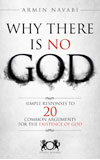
One relatively new counterargument to atheism is the so-called transcendental argument for God, or TAG, as popularized by Matt Slick of Christian Apologetics & Research Ministry (CARM) (1).
Although the transcendental argument for God as displayed on the CARM website is fairly new, the ideas behind it trace back at least as far as Immanuel Kant (2). Kant introduces the idea and structure of the transcendental argument using certain logical truths or laws that are universal, unchangeable and absolute.
What the Transcendental Argument Actually Says
From a philosophical standpoint, there are three logical absolutes:
- Law of Identity: Something is what it is and isn't what it is not. Something that exists has a specific nature. For example, an apple is that apple, and a rock is that rock. In other words, whatever is, is.
- Law of Non-contradiction: Two opposing statements cannot both be true. For example, “this is an apple” and “this is a rock” cannot both be true if the object in both statements is referring to the same thing. In other words, nothing can both be and not be.
- Law of Excluded Middle: A statement cannot be both true and false at the same time in the same sense. For example, the statement “this is an apple” is either true or false; an object being an apple can’t be both true and false at the same time. In other words, everything must either be or not be.
These laws are necessarily absolute. They are always true, and there can be no exceptions. Someone who says, “This rock is an apple,” makes no sense, as that statement defies the laws of logic; in order for a discussion to take place, all parties involved must agree that rocks, once defined, are always rocks and adhere to their definitions.
The TAG argument builds on these laws of logic to provide the following “proof” of God:
- Logical absolutes exist.
- These laws of logic are conceptual in nature, not physical. They do not exist anywhere in the physical world.
- Because these absolutes are conceptual, they must have been conceived in a mind.
- However, these laws are perfect and absolute. Human minds are not perfect or absolute.
- Logical absolutes are true everywhere and are not dependent on human minds.
- Therefore, these laws of logic must exist in a perfect, absolute, transcendental mind.
- That mind is called God.
Put in another way, logical absolutes must be the product of a mind, and these laws are absolute, so there must be an absolute mind behind them with that mind being God.
In order for a logical proof to work, two conditions must be met: The premises must be true, and the structure must support the premises to their logical conclusion. Structurally, the argument is logically sound; if every premise were true, then the outcome would also be true. However, as we shall see, the premises are not true, which invalidates the argument entirely.
The Fallacy of Equivocation
The problem with the TAG is that the laws of logic are descriptive, not prescriptive. In other words, the laws are simply a description of things we know to be true. The universe does not conform to logical absolutes because someone thought them up and is holding reality to that standard. These absolutes exist purely to describe patterns that we have observed as true in reality. To understand the difference between a descriptive and prescriptive law, consider this example:
Gravity is a descriptive law. Isaac Newton didn’t create gravity. It existed before he identified it and would have continued existing regardless of whether he had ever given it a name. The laws of gravity are simply observations made by scientists that explain natural processes.
The traffic speed limit is a prescriptive law. It was created and enforced by people, and it’s meaningless without such enforcement. If no one came up with a speeding limit or held people accountable for speeding, speed limits would cease to exist.
In the same way, the laws of logic are descriptive. No one made them up or wrote them in a handbook somewhere for them to exist. They were simply observed as always being true (rocks are always rocks because if a rock were anything else, it would cease to be a rock). Because the laws of logic are not prescriptive, they do not require the mind of a deity or any other mind to exist. Human minds can identify them and put them into words, but the phenomena these laws refer to would continue to exist regardless of whether a deity or anyone else thought about them.
Proponents of TAG conflate the description of logical laws with the natural phenomena they refer to. Equating an object with its description is like equating a photograph of a car with the real thing; although the photograph accurately depicts an image of the car, you cannot apply the qualities of the photo in accurately describing the real car. Otherwise, you might erroneously extrapolate that cars are flat and fit in the palm of your hand. The same is true for the laws of logic. The statement “A=A” is a conceptual description of a physical property. The statement itself requires a mind to describe it. However, the physical property would remain true, with or without a mind to conceive it.
What this means is that these descriptions themselves are what is purely conceptual. But the laws they describe are not conceptual. What these laws refer to is the consistency of existence, which exists whether or not they’re being described or identified by a mind. A rock is always a rock because it exists in reality. If there were no mind to observe the rock, it would still be a rock. Minds are necessary only to describe that phenomenon, not to make it true.
The fallacy of equivocation occurs because the TAG argument uses logical absolutes in more than one sense (3). Logical absolutes, as described in step one of the TAG argument above, are physical underpinnings of the universe; in step two, they are the descriptions of those laws, like the photograph described earlier. Logical absolutes do exist. However, these laws are not conceptual in nature. We do not need any minds for them to exit. We only need minds to observe, understand and express these laws. Furthermore, our perceptions of these laws are by no means perfect, unchanging or absolute.
Other Flaws with the Transcendental Argument
Even if the premises of TAG were sound, the argument still leaves much to be desired as evidence of the existence of God. If you were to accept the premise that universal concepts require a universal mind to think of them, there is nothing to suggest what that mind might be like.
In other words, the transcendent mind behind the rules of logic would not necessarily need to have any of the qualities commonly associated with deities, including benevolence, omnipotence, a role in the creation of the universe and a source of morality. There is nothing in the transcendental argument to suggest that the hypothetical mind behind the rules of logic was capable of or responsible for anything other than conceiving of those laws. As such, it would fail to actually prove anything about the existence of deities or provide convincing reason to worship or attempt to create personal relationships with god(s).
References:
- Slick, Matt. "The Transcendental Argument for the Existence of God." CARM. Accessed September 16, 2014.
- Kant, Immanuel and David Walford. "The Only Possible Argument in Support of a Demonstration of the Existence of God." Theoretical Philosophy, 1755-1770. Cambridge: Cambridge University Press, 1992.
- Bennett, Bo. "Equivocation." Logically Fallacious: The Ultimate Collection of over 300 Logical Fallacies. EBookIt.com, 2012.






























